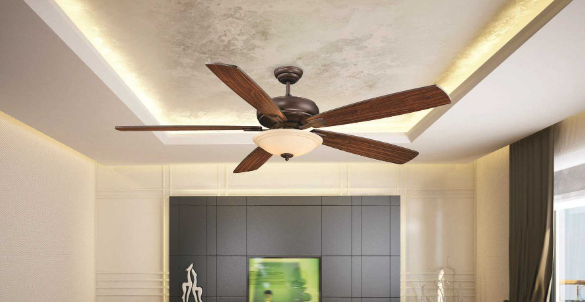Beyond Aesthetics: Understanding the Crucial Role of Ceiling Fans in Interior Design

Welcome to a world beyond aesthetics, where we dive deep into the unsung heroes of interior design – ceiling fans. Often overlooked and dismissed as mere functional elements, these ingenious devices can transform a space from ordinary to extraordinary. Today, we unravel their crucial role in creating the perfect ambiance, enhancing comfort, and ultimately elevating your living experience. So buckle up as we embark on this enlightening journey through the mesmerizing realm of ceiling fans!
What are the benefits of ceiling fans in interior design?
Ceiling fans can add a lot of attractiveness to an interior design project. Here are some of the benefits:
They add circulation and move air around your space, improving air quality.
They help to reduce drafts and improve your home’s insulation.
They create a more comfortable environment by circulating cool air in the summer and warm air in the winter. This can help to lower energy bills.
Some models have special features that make them perfect for certain types of rooms, such as a children’s or a bedroom.
How do modern ceiling fans differ from older models?
Often, people think of ceiling fans as purely decorative pieces in their homes. However, the fan’s function is more important than being aesthetically pleasing. Today’s ceiling fans are much different from older models – they’re more energy-efficient and have updated features that make them more user-friendly.
Their motor is one of the most significant changes in modern ceiling fans. Older models used DC motors, which are direct current motors. They’re efficient but can be less powerful and have a shorter lifespan. Today’s fans use AC motors, which use alternating current to create more power and longer lifespans. Additionally, many newer models feature remote controls and sensors that help regulate the airflow based on how hot or cold it is inside the room. This makes them perfect for smaller rooms or apartments where you don’t want to spend much time adjusting the fan’s airflow.
In addition to their innovative motor technology, some newer models even have LED lights built into them! These lights are incredibly bright and can add extra brightness or color to your home décor. Again, these features make these fans perfect for smaller spaces or apartments where conventional light fixtures might not be suitable.
While modern ceiling fan technology has evolved significantly over the years, one thing remains consistent – these fans are still essential for interior design in any home.”
Why is a fan pitch important for designing a room with a ceiling fan?
Ceiling fans are a popular choice for cooling summer rooms, but their popularity is also attributable to their ease of use. A fan pitch (the distance between the blades and the ceiling) that is too low can create a wind tunnel effect which can cause the fan to wobble and noise. A high fan pitch can make it difficult for the fan to circulate air, leading to overheating and possible mechanical failures. It’s important to have a good understanding of the different types of fan pitches before selecting one for your room and to calculate the square footage of your space to determine whether a high or low fan pitch is necessary.
Other factors that affect the effectiveness of a ceiling fan in an interior space?
There are many things to consider when purchasing a ceiling fan for an interior space, but the location and dimensions of the light fixture are two of the most important. Likewise, the blade type on a fan can also make a difference in how well it circulates air.
Ceiling fans come in many different styles, with each boasting its own set of advantages and disadvantages. However, regardless of the style, all fans work best when placed near windows or doors that open into a large space. In addition to better airflow, this placement allows natural light to flood into the room.
When choosing a fan for an interior space, pay attention to how much light the fan distributes. If you have low-hanging lights or sparsely placed furniture, choose a smaller fan that will circulate more air. For high-ceiling areas or spaces with lots of furniture, check out fans with taller blades that pull air down instead of spreading it around. And finally, be sure to read reviews online before making your purchase – knowing what others have experienced can help you save some serious coin!




